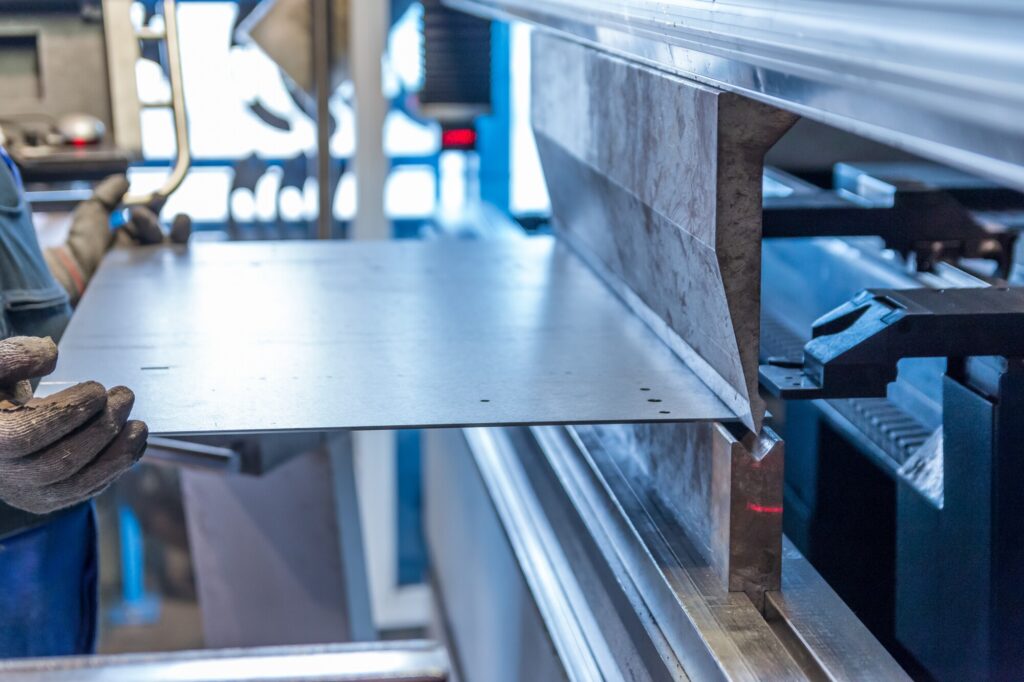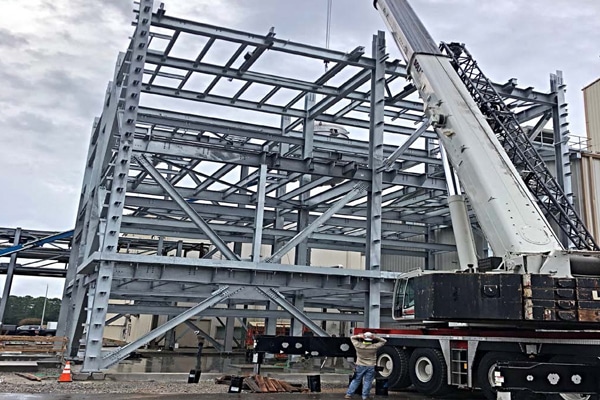Reputable Steel Fixing Solutions: Making Sure Structural Integrity
Wiki Article
Comprehensive Analysis of Cutting-Edge Techniques in Steel Fabrication Sector
As the steel construction sector remains to progress, the combination of advanced techniques has come to be crucial for staying affordable and satisfying the needs of contemporary production requirements. From laser cutting improvements to the utilization of robotics and 3D printing in steel manufacturing, the landscape of fabrication methods is rapidly altering. With each advancement bringing its own set of advantages and challenges, a thorough analysis of these techniques is vital for companies aiming to enhance their processes, boost accuracy, and inevitably, boost the quality of their steel manufacture outcome. In this dynamic market where modern technology plays a pivotal function, understanding the subtleties of these cutting-edge techniques is not just an option however a need for those seeking to advance in the ever-evolving world of steel manufacture.Laser Cutting Innovations
In the realm of steel fabrication, laser reducing advancements have reinvented the accuracy and effectiveness of steel shaping processes. By taking advantage of the power of focused laser beams, manufacturers can currently attain unrivaled degrees of precision when reducing with numerous kinds of steels. This technology enables intricate designs to be carried out with very little material wastage, making it an affordable option for markets needing high accuracy elements.One of the essential advantages of laser cutting is its capacity to manage a large array of products, including stainless-steel, aluminum, and carbon steel, easily. The process produces tidy, burr-free edges, getting rid of the requirement for extra completing steps. In addition, the non-contact nature of laser cutting reduces the threat of product contamination, causing greater quality end items.
Furthermore, laser reducing machines can be configured to make swift, specific cuts, considerably reducing manufacturing time contrasted to conventional reducing methods. This rate and precision make laser reducing especially appropriate for mass manufacturing environments where effectiveness is vital. As innovation continues to breakthrough, laser cutting is poised to play an increasingly vital function in the steel construction sector.

CNC Machining Innovations
The advancement of CNC machining technologies has ushered in a brand-new period of precision and performance in the steel fabrication industry. Computer Numerical Control (CNC) equipments have revolutionized steel fabrication by providing unmatched precision and repeatability in the manufacturing process. steel fabrication melbourne. Among the vital technologies in CNC machining is the integration of advanced software application systems that allow real-time monitoring and modifications, resulting in improved efficiency and high quality controlMoreover, the growth of multi-axis CNC equipments has actually enabled the fabrication of intricate steel parts with complex layouts that were formerly testing to create. These devices can carry out a wide variety of machining procedures, consisting of milling, boring, turning, and grinding, all with high levels of accuracy.
Moreover, the incorporation of automation and robotics in CNC machining has streamlined manufacturing procedures, lowered lead times, and reduced the margin of mistake. This assimilation of advanced modern technologies not just enhances performance but also ensures consistent top quality throughout all fabricated steel components. To conclude, CNC machining advancements proceed to drive innovations in the steel fabrication industry, setting new standards for accuracy and performance.
Automated Welding Technologies
Automated welding innovations have actually reinvented the steel manufacture sector, boosting performance and accuracy in the welding process. These innovative innovations make use of computer-controlled systems to automate the welding process, bring about higher efficiency degrees and improved weld top quality. One of the key benefits of automated welding is the capacity to execute intricate welds with regular accuracy, decreasing the chance of errors and rework.Robot welding systems are at the leading edge of automated welding technologies, supplying unequaled speed and accuracy. These systems can deal with a vast range of welding tasks, from easy to complex, effortlessly (Alpha reo). By using innovative sensors and software application, robotic welders can adapt to variations in product and joint geometry, guaranteeing an attire and reputable weld
Furthermore, automated welding innovations enhance work environment safety and security by decreasing the direct exposure of human welders to hazardous fumes and intense warm. As the steel manufacture industry remains to advance, including automated welding technologies will be essential for companies wanting to stay competitive and meet the growing demands for top notch bonded items.
Robotics Combination in Construction
Utilizing robotic systems in fabrication procedures has actually come to be an essential method for improving effectiveness and accuracy in modern-day manufacturing atmospheres. Robotics integration in steel fabrication supplies a myriad of advantages, including boosted efficiency, improved quality assurance, and boosted precaution. These sophisticated robotic systems are outfitted with advanced sensors and programming capabilities, allowing them to do detailed jobs with a high degree of accuracy and repeatability.Among the crucial benefits of robotics assimilation in steel construction is the ability to automate recurring jobs, such as product handling, reducing, welding, and setting up processes. This not only speeds up manufacturing cycles yet likewise lowers the risk of human mistake, causing higher total item top quality. Furthermore, robotics can operate 24/7, significantly enhancing production outcome and meeting limited project target dates.

3D Printing in Steel Manufacturing
Having actually revolutionized the steel construction industry with robotics integration, the burgeoning expedition of 3D printing in steel manufacturing is positioned to further breakthrough the world of modern production strategies. 3D printing, additionally recognized as additive manufacturing, offers unmatched layout freedom and intricacy, enabling the development of elaborate steel frameworks that were formerly unattainable via traditional manufacturing approaches. By using computer-aided design (CAD) software program, producers can precisely manage the layer-by-layer deposition of steel product, leading to get rid of improved performances and geometries.One of the key advantages of 3D printing in steel production is its ability to reduce product waste considerably. Unlike subtractive Alpha reo manufacturing procedures where excess product is cut away, 3D printing only uses the essential quantity of steel required for the last part. This performance not just results in set you back financial savings yet also aligns with lasting manufacturing techniques by decreasing ecological influence.
Furthermore, 3D printing allows quick prototyping and customization, enabling for the manufacturing of tiny batches of intricate steel elements with brief lead times. As the innovation continues to develop and end up being a lot more available, its integration into mainstream steel construction processes is anticipated to drive development and performance throughout the sector.
Verdict
Finally, the steel fabrication industry has seen significant developments in methods such as laser cutting, CNC machining, automated welding, robotics combination, and 3D printing. These innovative innovations have actually revolutionized the method steel products are produced, bring about enhanced cost-effectiveness, efficiency, and accuracy. Continued financial investment in these innovative techniques is critical for the sector to remain competitive and meet the needs of contemporary production procedures.As the steel fabrication market proceeds to progress, the integration of advanced techniques has actually ended up being necessary for remaining affordable and satisfying the needs of contemporary manufacturing criteria.One of the crucial advantages of laser cutting is its ability to manage a broad range of products, including stainless steel, light weight aluminum, and carbon steel, with simplicity.Automated welding modern technologies have reinvented the steel manufacture industry, improving performance and precision in the welding process.Having revolutionized the steel construction sector with robotics combination, the burgeoning exploration of 3D printing in steel manufacturing is positioned to more advance the realm of modern production techniques.In final thought, the steel fabrication industry has actually seen substantial developments in methods such as laser cutting, CNC machining, automated welding, robotics assimilation, and 3D printing.
Report this wiki page